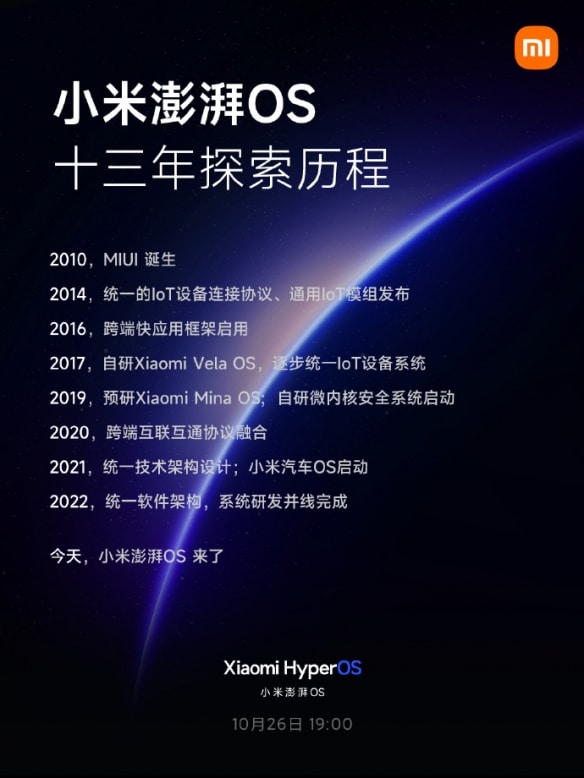Xiaomi is set to host a press conference at 7 p.m. on October 26 to unveil its new operating system, HyperOS. This event marks the launch of the Xiaomi 14 series of new products.
Today, Xiaomi founder, chairman, and CEO Lei Jun takes a look back at Xiaomi’s research and exploration of operating systems since its inception. Xiaomi has undergone numerous iterative system upgrades, progressing from MIUI to HyperOS.

MIUI enhances the Android system’s interaction layer and makes fundamental changes in the system framework, performance schedule, kernel capabilities, and more by diving into the Linux kernel at the system’s foundation. For instance, in 2013, Xiaomi introduced a process-aligned wake-up mechanism, outpacing Android by half a year. Furthermore, its runtime permission management technology for user privacy protection preceded Android for nearly three years.
With the growth of the IoT business, Xiaomi has delved deeper into the research and development of embedded systems. In 2014, Xiaomi introduced a connection protocol for IoT devices. In 2017, Xiaomi officially launched its self-developed Vela OS, a scalable and adaptable operating system supporting various smart hardware products. People have already installed Vela OS on over 20 million devices.
Xiaomi developed a cross-end application framework, tested it with some products, and integrated it into their self-developed system, Mina OS. They later merged the software architecture of MIUI, Vela, Mina, and car OS to create the new operating system, HyperOS.
The released information indicates that HyperOS integrates the highly evolved Android and Xiaomi’s self-developed Vela system. Its primary objective is to provide a foundational platform for the Internet of Everything, with the intention of adding more devices and connections in the future.
Read Also: Xiaomi HyperOS Complete System Architecture Announced